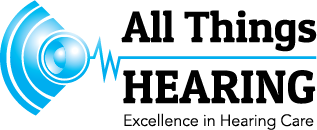Are you looking for a Comprehensive Hearing Test Daisy Hill?
Ready to take the first step towards better hearing?
Let’s talk!
Connect with us today! Fill out the contact form below to schedule your personalised hearing consultation at All Things Hearing. Our expert team is committed to guiding you on your journey to improved hearing health. Don't wait to enhance your quality of life. Reach out now – we're here to listen and help!
Follow us:
A comprehensive hearing test evaluates multiple aspects of your hearing health through several diagnostic procedures. You'll undergo pure-tone testing to measure sound detection, speech recognition tests to assess word understanding, and middle ear function checks. Your audiologist will examine your ears, review your medical history, and create an audiogram showing your hearing thresholds. Learning more about these tests can help you prepare for your evaluation and understand potential treatment options.
What to Expect During Your Hearing Assessment
When you come in for a hearing assessment, you'll start by answering questions about your medical history and any hearing concerns you've been experiencing. The audiologist will then examine your ears using an otoscope to check for visible problems like earwax buildup or eardrum damage.
Next, you'll enter a soundproof booth and wear headphones for several tests. During pure-tone testing, you'll indicate when you hear beeps at different frequencies and volumes. Speech recognition tests will assess how well you understand words at varying sound levels. The audiologist may also check your acoustic reflexes and perform tympanometry to evaluate your middle ear function.
After testing, your audiologist will explain your results using an audiogram and discuss treatment options if hearing loss is detected.
Types of Hearing Tests and Their Purposes
There are five main types of hearing tests that audiologists use to evaluate different aspects of your hearing ability. Pure-tone testing measures the softest sounds you can hear at different frequencies. Speech testing evaluates how well you understand words at various volumes. Tympanometry checks your middle ear function by measuring your eardrum's movement. Otoacoustic emissions testing assesses your inner ear's response to sound by detecting tiny sounds your cochlea produces. Finally, auditory brainstem response testing examines how your hearing nerve transmits signals to your brain.
Each test provides unique information about your hearing health, helping your audiologist diagnose specific problems and develop an appropriate treatment plan. You may need one or several of these tests depending on your symptoms and medical history.
Signs You Need a Professional Hearing Evaluation
Understanding these hearing tests is valuable, but knowing when to schedule them is equally important. You should seek a professional evaluation if you frequently ask people to repeat themselves or find yourself turning up the TV volume higher than others prefer. Watch for signs like difficulty following conversations in noisy environments or feeling that people are mumbling.
Other red flags include struggling to hear high-pitched sounds, experiencing ongoing ringing in your ears, or having trouble understanding phone conversations. If you've been exposed to loud noise at work or during recreational activities, or if you're over 60, regular hearing screenings are recommended. You should also get checked if you notice sudden hearing changes or feel off-balance, as these could indicate underlying medical conditions.
Understanding Your Test Results
Most hearing test results appear as a detailed audiogram – a graph showing how well you hear different sound frequencies and volumes. The graph plots your hearing thresholds across low to high pitches, measured in decibels. Normal hearing typically falls between 0-25 decibels.
Your audiologist will explain where your results fall on the hearing loss scale: mild (26-40 dB), moderate (41-55 dB), moderately severe (56-70 dB), severe (71-90 dB), or profound (91+ dB). They'll also identify if your hearing loss is conductive, sensorineural, or mixed type.
You'll learn which specific frequencies you struggle with most and how this impacts your daily communication. This information helps determine if you need hearing aids and which type would work best for your situation.
Common Hearing Issues Detected Through Testing
Hearing tests regularly identify several distinct types of hearing loss and auditory conditions. You might be diagnosed with sensorineural hearing loss, which affects your inner ear's ability to process sound, or conductive hearing loss, where sound can't properly reach your inner ear. Some tests reveal mixed hearing loss, combining both types.
Other common issues include tinnitus, characterized by persistent ringing or buzzing in your ears, and presbycusis, which is age-related hearing decline. You may also learn you have high-frequency hearing loss, making it difficult to understand speech in noisy environments. Testing can additionally detect acoustic trauma from loud noise exposure, Meniere's disease, or auditory processing disorders that affect how your brain interprets sound signals.
Follow-Up Care and Treatment Options
Once your hearing test results are in, you'll typically have several treatment paths available. Your audiologist will discuss options ranging from hearing aids to cochlear implants, depending on your type and degree of hearing loss. They'll also recommend specific lifestyle modifications that can protect your remaining hearing.
If you're prescribed hearing aids, you'll need regular follow-up appointments to ensure proper fit and function. These visits allow for adjustments to your devices and monitoring of your progress. Your treatment plan may also include speech therapy, counseling, or tinnitus management techniques.
For some conditions, you might need referral to an ENT specialist for medical or surgical intervention. Regular check-ups will help track changes in your hearing and ensure your treatment remains effective.
Disclaimer
The content on our site is purely for education and should not be seen as an endorsement or recommendation of any treatments or products without a thorough hearing assessment and evaluation. Before starting any treatment, users should get advice from a professional and be fully aware of any potential side effects or risks related to the procedures. Any products we mention cannot be purchased by the public without first consulting a hearing health expert.
